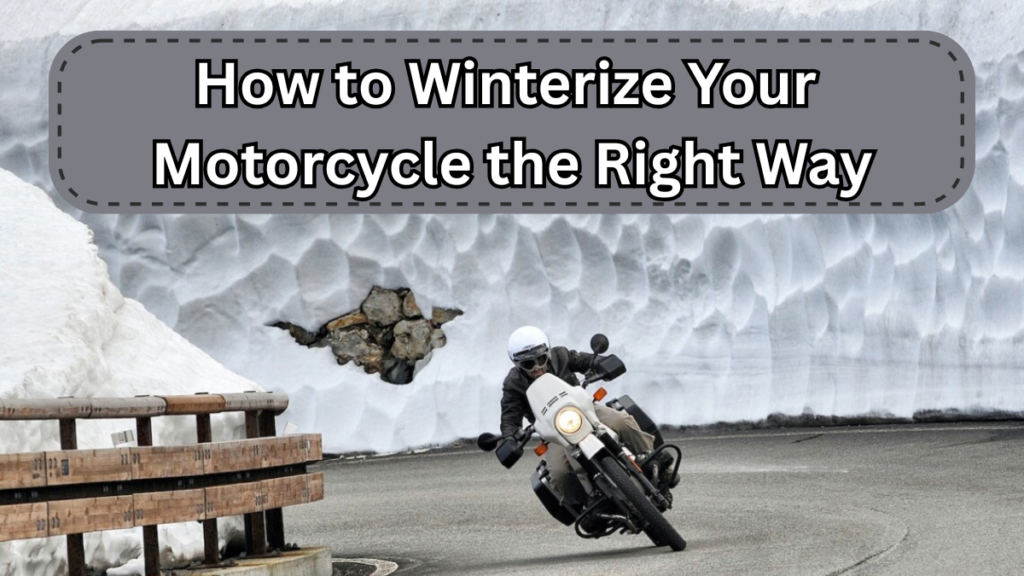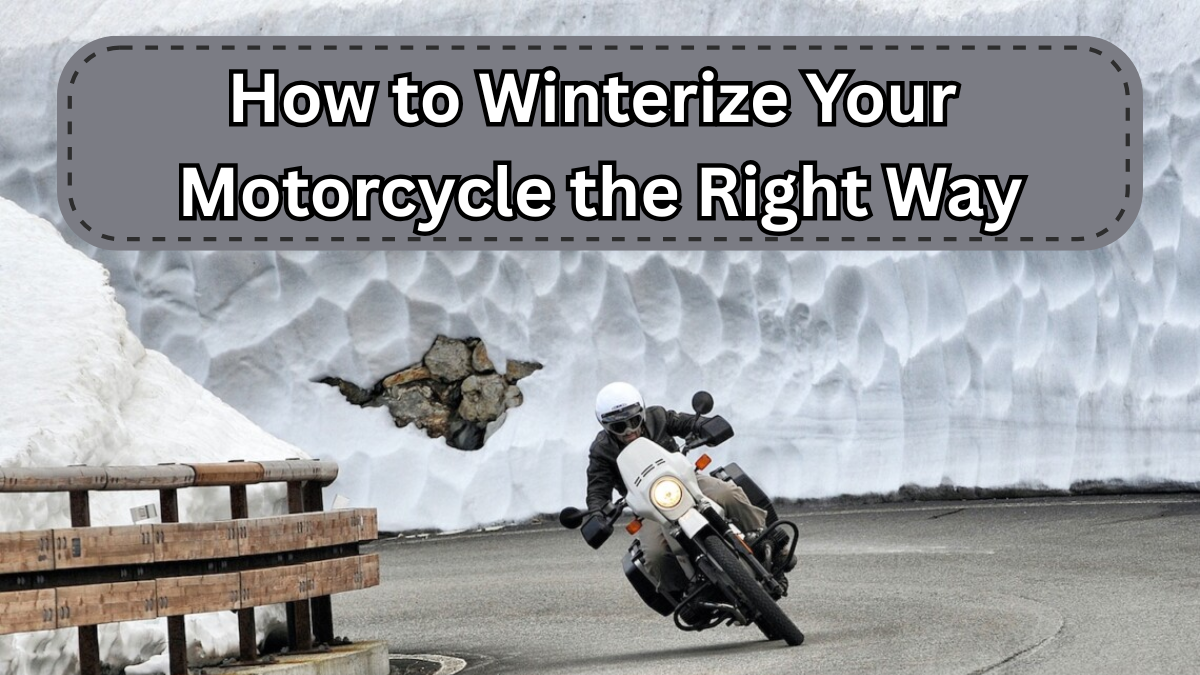Winter is on its way, and for motorcycle owners, it’s time to prep for the cold. Knowing how to winterize your motorcycle the right way can make all the difference when spring arrives. A few proactive steps now can protect your bike from damage, corrosion, and battery failure—and save you some serious cash.
Whether you plan to store your ride or continue with occasional cold-weather trips, smart cold weather bike care keeps your motorcycle in prime condition all season long.

Why You Should Winterize Your Motorcycle?
Cold temperatures, condensation, and winter grime can take a toll on your bike. Winterizing ensures:
-
Protection from rust and corrosion
-
Longer battery life
-
Preserved tire integrity
-
Smooth startup come spring
-
Reduced risk of fuel system issues
It’s like giving your bike a winter coat—only better.
How to Winterize Your Motorcycle: Step-by-Step
Clean the Bike Thoroughly
Start with a deep clean. Dirt, salt, and grime can lead to corrosion over time.
-
Use a mild detergent and water
-
Focus on hard-to-reach areas like the chain and undercarriage
-
Dry the bike completely to avoid moisture build-up
Change the Oil and Filter
Used oil can turn acidic over time, damaging your engine.
-
Drain the old oil and replace it with a fresh, cold-weather-suitable grade
-
Replace the oil filter as well
Prep the Fuel System
Fuel breaks down over time and can gum up your engine.
-
Fill the gas tank completely
-
Add a fuel stabilizer to prevent fuel degradation
-
Run the engine for a few minutes so the stabilizer circulates
-
If storing for several months, consider draining the carburetor
Take Care of the Battery
Cold weather and inactivity are tough on batteries.
-
Disconnect the battery to prevent slow drain
-
Store it in a warm, dry place
-
Use a trickle charger or battery maintainer to keep it in good shape
Check and Protect Tires
Stationary tires can develop flat spots.
-
Inflate them to the recommended PSI
-
If possible, elevate the bike using a center or paddock stand
-
If not using a stand, rotate the tires every few weeks to avoid flat patches
Lubricate and Protect from Rust
Keep moving parts in good condition and metal surfaces corrosion-free.
-
Lubricate the chain thoroughly
-
Apply anti-corrosion spray or fogging oil to exposed metal surfaces
Store Your Motorcycle Properly
Where and how you store your bike matters.
-
Keep it in a dry, temperature-controlled space if possible
-
Use a breathable motorcycle cover (avoid plastic tarps)
-
Make sure the cover fits well to keep out dust and moisture
Quick Reference: Winterizing Checklist
| Task | What to Do | Why It’s Important |
|---|---|---|
| Clean the Bike | Wash and fully dry | Prevents rust and grime build-up |
| Change Oil & Filter | Use fresh oil and a new filter | Protects engine from wear and corrosion |
| Fuel System Prep | Fill tank, add stabilizer, run engine | Avoids fuel degradation and moisture |
| Battery Care | Disconnect and trickle charge | Extends battery life |
| Tire Maintenance | Inflate properly, use stands or rotate bike | Prevents flat spots |
| Lubrication & Protection | Lube chain, spray rust inhibitor | Reduces wear and corrosion risk |
| Proper Storage | Store in dry place with breathable cover | Shields from elements and dust |
Extra Tips for Winter Riding Prep
If you’re not putting your motorcycle into full hibernation, make sure you’re also prepared for winter riding prep:
-
Wear insulated, waterproof riding gear
-
Consider installing heated grips or handlebar muffs
-
Inspect tires regularly for pressure and tread
-
Keep up with frequent oil and battery checks
Riding in winter is doable—just not without proper protection for both you and your bike.
FAQs
Q1: How often should I check my battery during winter?
Check it at least once a month. If you’re not using a battery tender, a fully charged battery will slowly lose power and may not crank your engine come spring.
Q2: Is it better to store the bike with a full or empty fuel tank?
Always store it with a full tank and add a fuel stabilizer. A full tank minimizes air and moisture buildup, which can cause rust inside the tank.
Q3: Can I leave my motorcycle outside during winter?
Yes, but it’s not ideal. If outdoor storage is your only option, use a waterproof yet breathable motorcycle cover, and try to keep the tires off direct contact with frozen ground.
Q4: Should I start my motorcycle occasionally during winter?
Only if you run it long enough (at least 15–20 minutes) to fully warm the engine and evaporate moisture. Otherwise, you may do more harm than good.
Final Thoughts
Knowing how to winterize your motorcycle doesn’t have to be complicated—it just requires a bit of time and attention. Whether you’re tucking your bike away or gearing up for winter riding prep, following these steps ensures your motorcycle stays safe, clean, and road-ready.
Give your motorcycle the cold-weather care it deserves, and it’ll thank you when the open road calls again in spring.
Click here to learn more
Pari is a passionate writer known for captivating stories that blend imagination and reality. Inspired by travel, history, and everyday moments, Pari crafts narratives that resonate deeply with readers.




